North Mauritius
The north of Mauritius island is the most touristy area and hence the most expensive. The climactic conditions of this part make it an excellent location all through the year. It is protected from all extreme weather activities prevalent in the East or the South West. The beaches here are a mix of sandy and rocky. There are several islands located in this part which make for great island trips. Hence, the facilities available in this area are also adequate. There are many restaurants, hotels, currency exchanges, petrol pumps, super markets and tour operators in this area. Some of the most popular places on the island are located in the North of Mauritius.
Port Louis
Port Louis is the capital city of Mauritius located on the North West part of the island. It is a bustling hub of activity all around. Here, you will find sky scrapers, historical monuments, colonial buildings, corporate offices, markets and what not. Needless to say, it is also a melting pot of all cultures and a true symbol of Mauritius. Historically, it holds an important place as the Dutch had their port located in Port Louis. With the introduction of indentured labour in Mauritius, this became a landing port for all the labourers from Asia and Africa.
There are many places worth a visit in this city alone. Since, it is very well connected with public transport, you can explore almost all the places from here. We spent 2 days in this place and covered almost all the spots on foot. And skipped what we could not cover on foot like Fort Adelaide. We also stayed just by the bus terminal so took the bus to a few other places. We are listing the places we visited in Port Louis as under:
Apravasi Ghat
This was our first stop as it was the nearest to our hotel in Chinatown. This place has a very significant place in the cultural history of Mauritius. It has been declared a UNESCO World Heritage Site. This is one of the oldest surviving immigration depot related to indenture. Indenture labour is a kind of modern contractual labour but with poor social, living and working conditions. It was introduced as way of The Great Experiment by the British colonialists after slavery was abolished. The workers were recruited from all British colonies to work in sugar plantations for 5 years. Port Louis served as the landing port for these indentured labours who came down from Africa or Asia, mainly India (97.5%), during the colonial era. Around 70% of the population of Mauritius are descendants of these labours.


This place was originally called the Coollie Ghat which was later renamed due to the word being derogatory. The restoration works began when the then Prime Minister of India Smt. Indira Gandhi visited Mauritius and came to visit this immigration depot. Even today, there is an operational harbour here, while the original place has been turned into an exhibit cum museum with remnants and visual descriptions about the history of the place.
Apart from the museum there are three stone buildings from the original ghat that were used as a warehouse, bathing points, makeshift hospital, officers quarters and worker quarters. The situation was far from respectable as may be analyzed from the displays. Information is conveyed through 3D models, written texts and videos. When visiting Apravasi ghat and learning about how life was for these people who were either tricked or forced into coming here makes one overwhelmed with emotions. This is a must visit if you want to explore Mauritius other than its natural beauty.
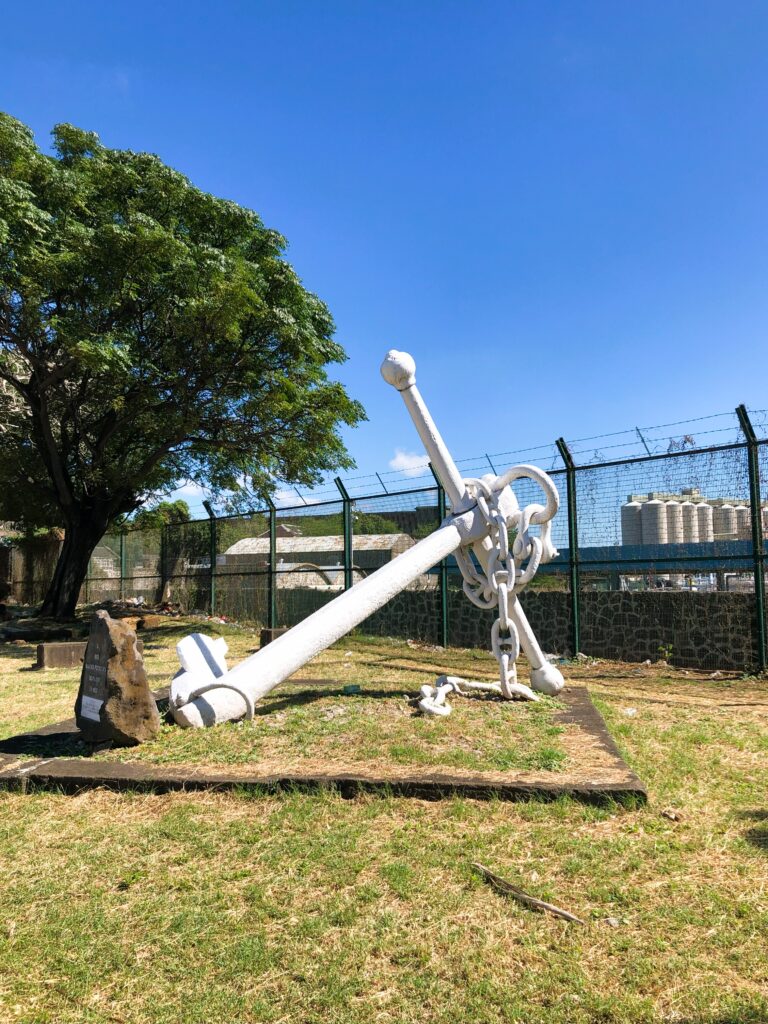
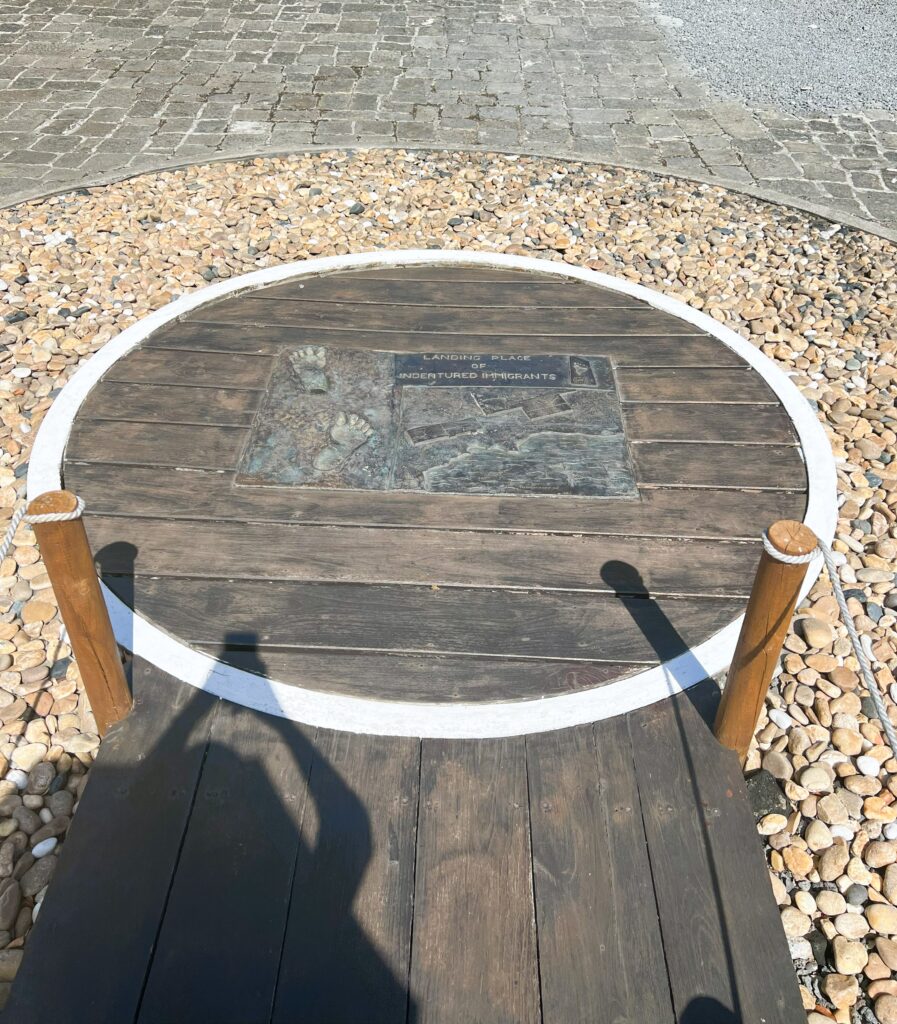
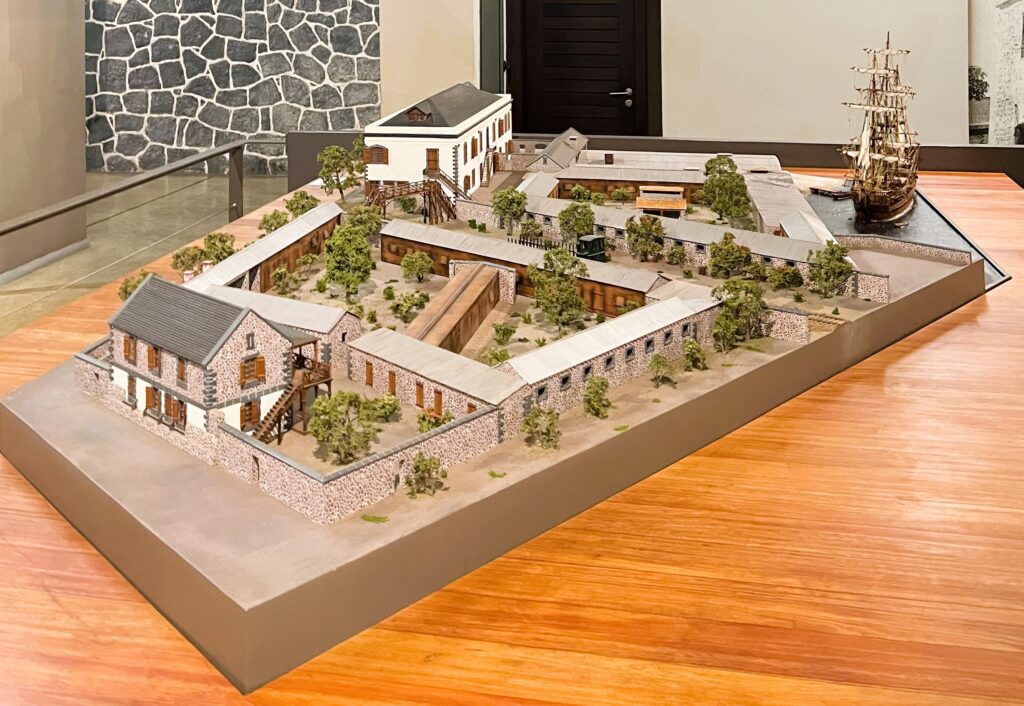
La Caudan Waterfront
This iconic place of Port Louis is an arcade of shops, restaurants and art. It is a cultural destination. The beautiful walkways are lined with boutiques that sell souvenirs, clothes and stationery. The iconic umbrella street is sure to catch your attention. Once you have shopped or window shopped to your heart’s content you may enjoy the various cuisines available in the food court or other fine dining restaurants. Located by the harbour offering views of a beautiful sunset, this makes for the perfect destination to bid adieu to the day. You can sit on the benches munching on some snacks and watching the cool sun disappear into the ocean.
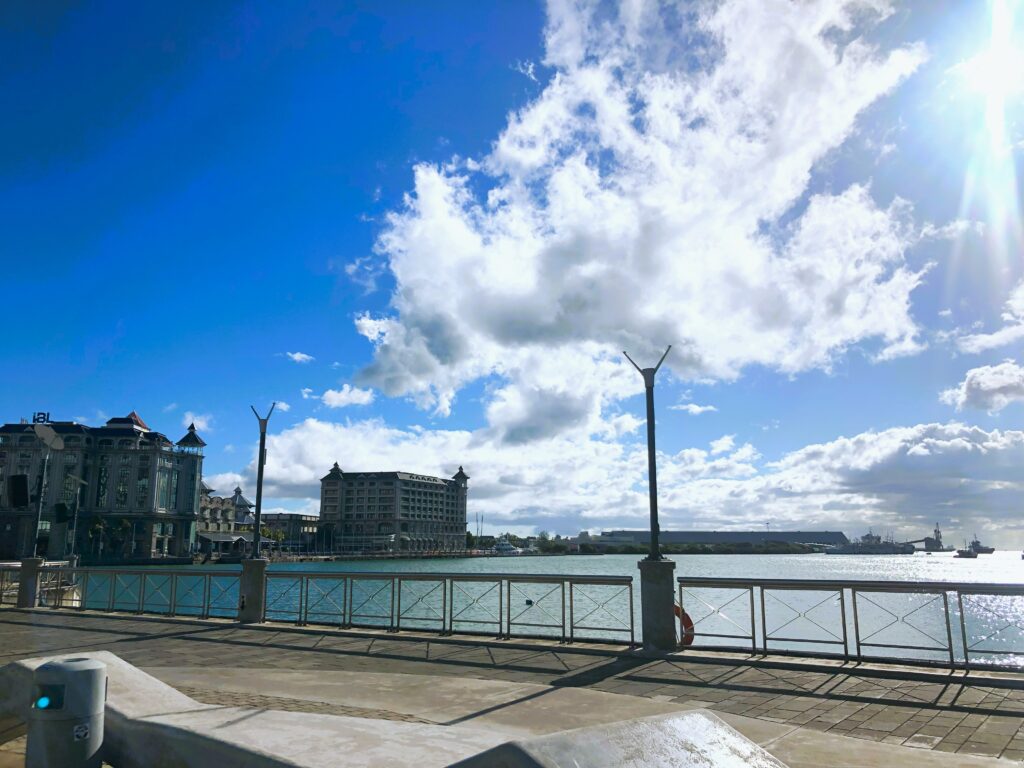
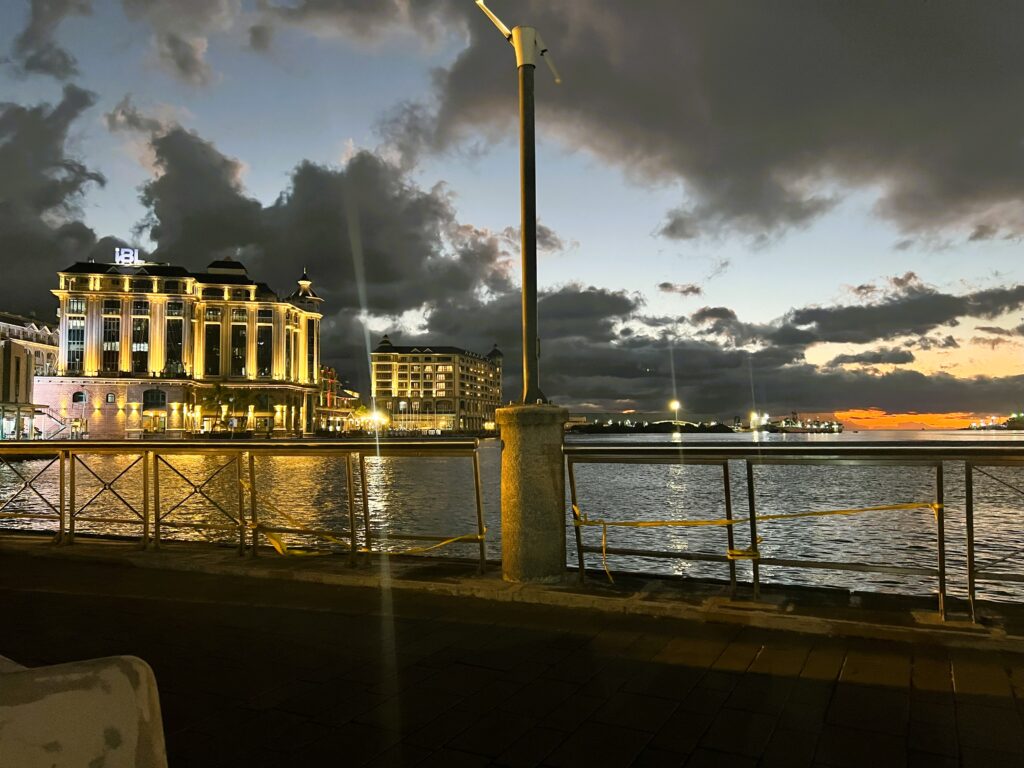
Anyone can relax by the water body or take a stroll through the streets to explore. There is a canal that runs through the buildings giving the area a Venetian look. The umbrella street has eateries and shops on both its sides.
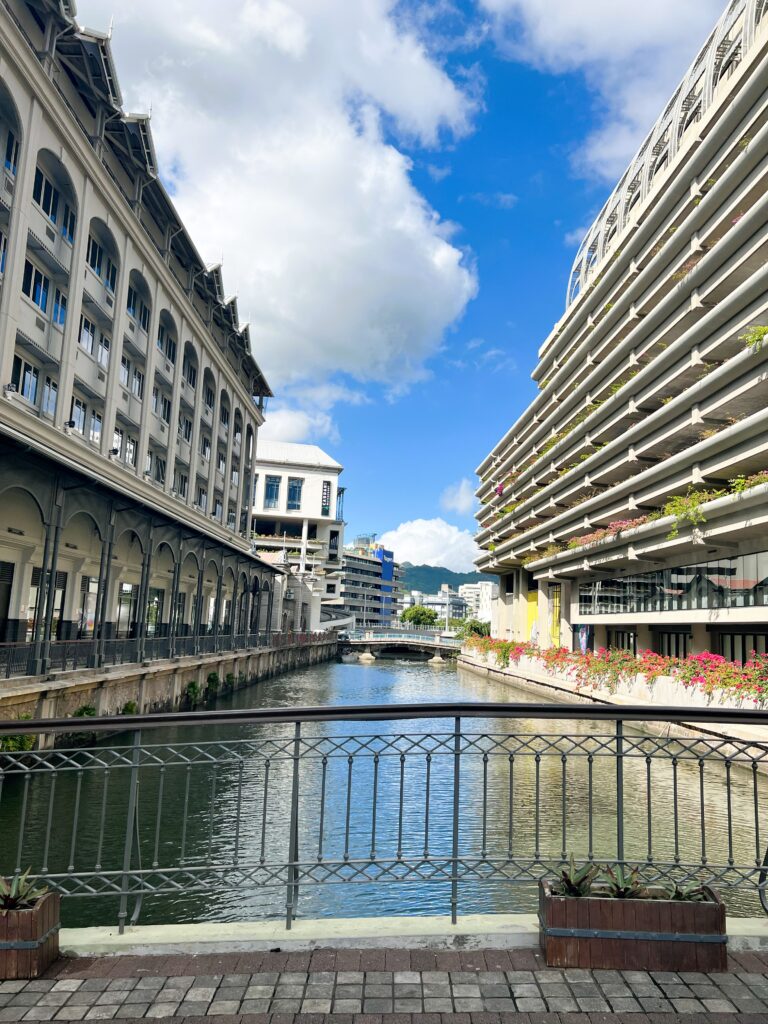
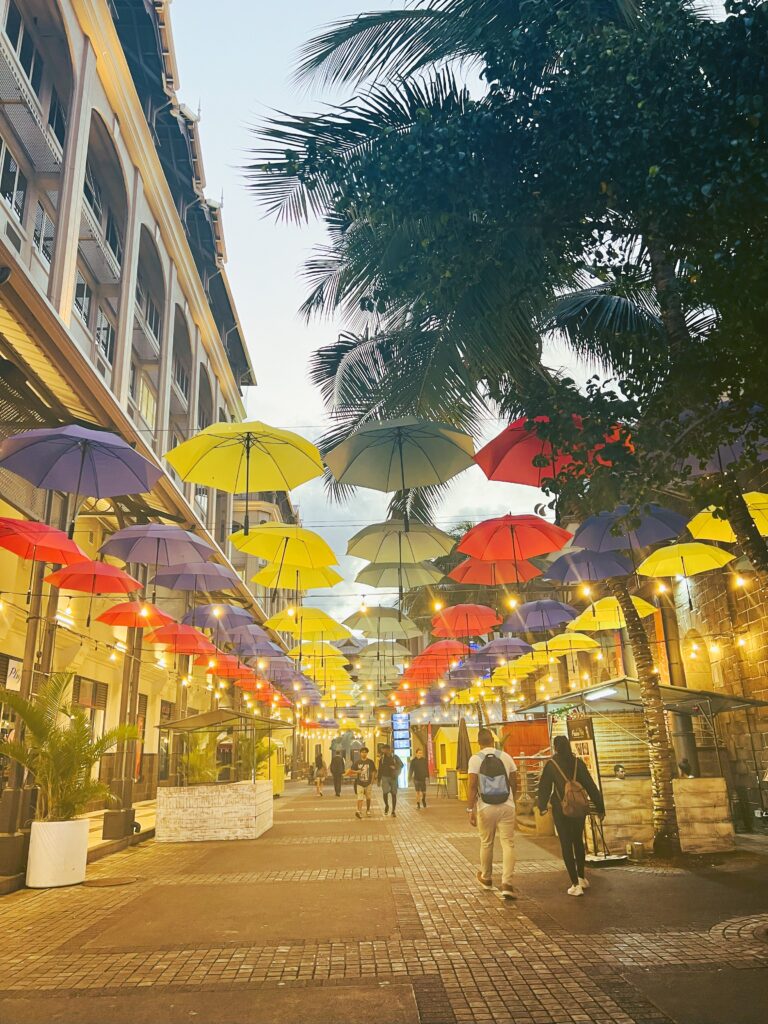
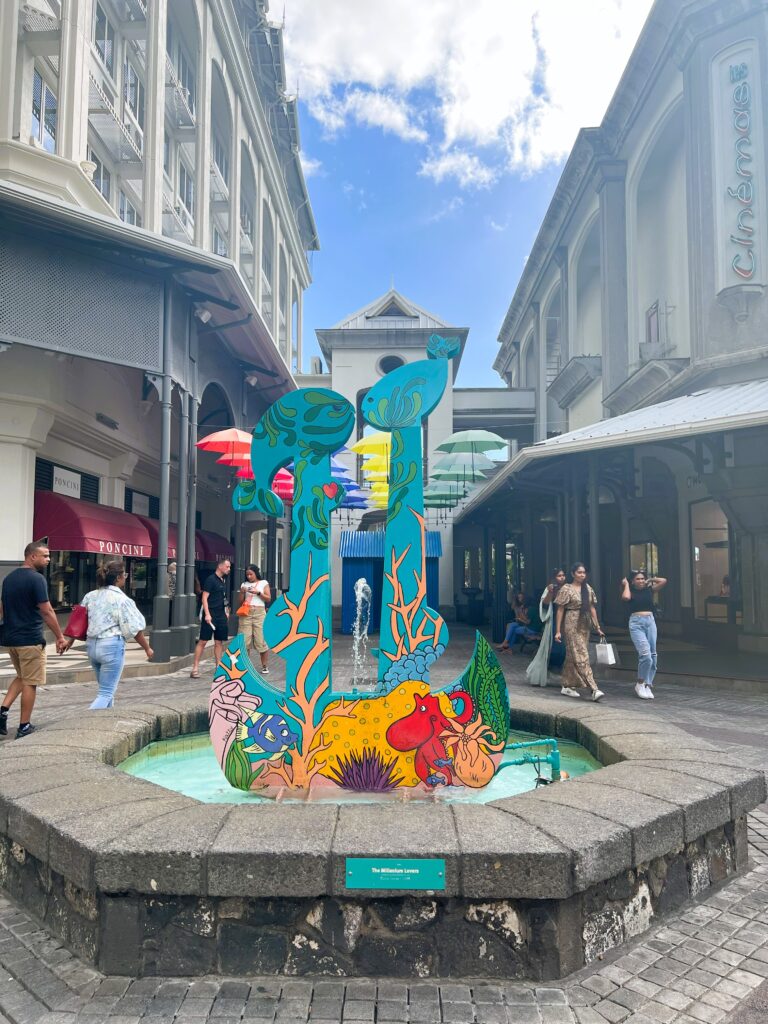
There is a movie theatre and an art centre (The Artiste Corner) as well where different artistes keep their work on display. This place houses the famous Blue Penny Museum, which have the old blue and red pennies of Mauritius on display and an astronomical observatory too.
Champ De Mars
Champ de mars is a famous place in Port Louis. It is world’s second oldest thoroughbred horse race track. It is still in operation so if you wish you might witness a live horse race. The hills surround the race track lending it a majestic view. The entire race track is visible from the Adelaide Fort or the Citadel. The Citadel is located on a nearby hill.
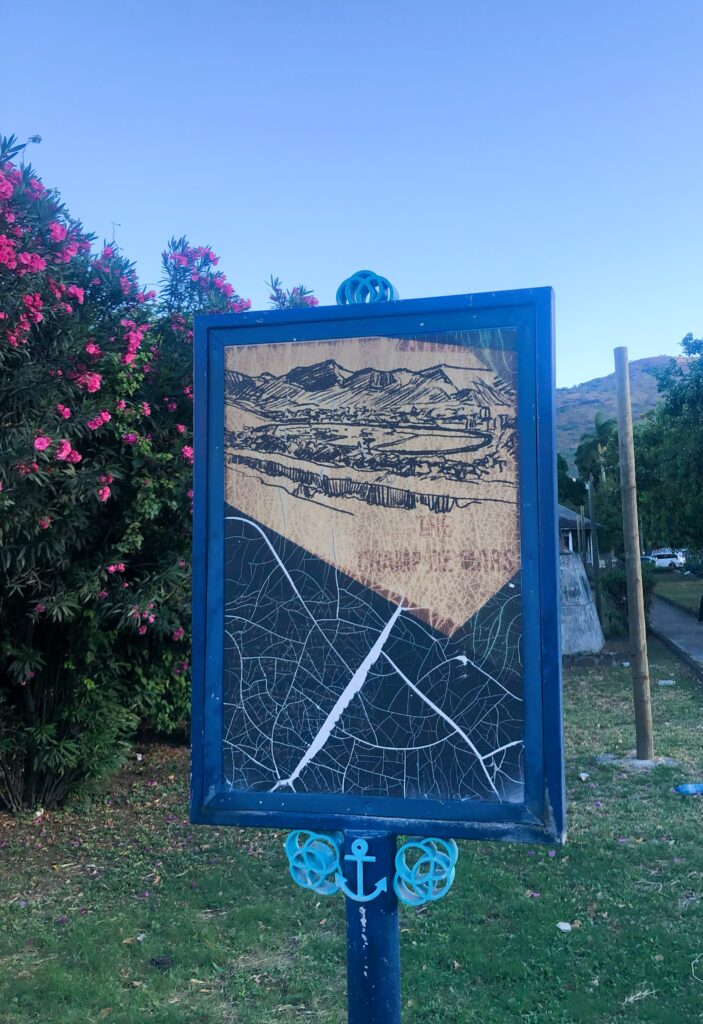
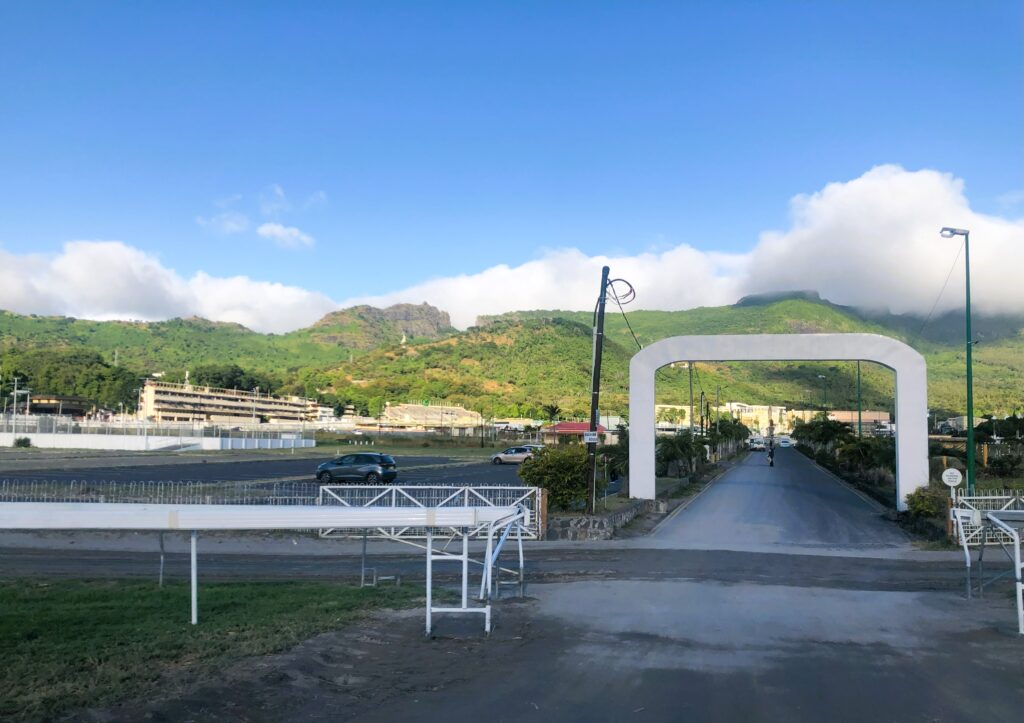
Chinatown
Chinatown area is a locality in Port Louis with plenty of Chinese restaurants and wonderful street art. There are two gates marking the entrance of China Town. Murals and lights cover the walls of the narrow streets in this area adding to its charm.
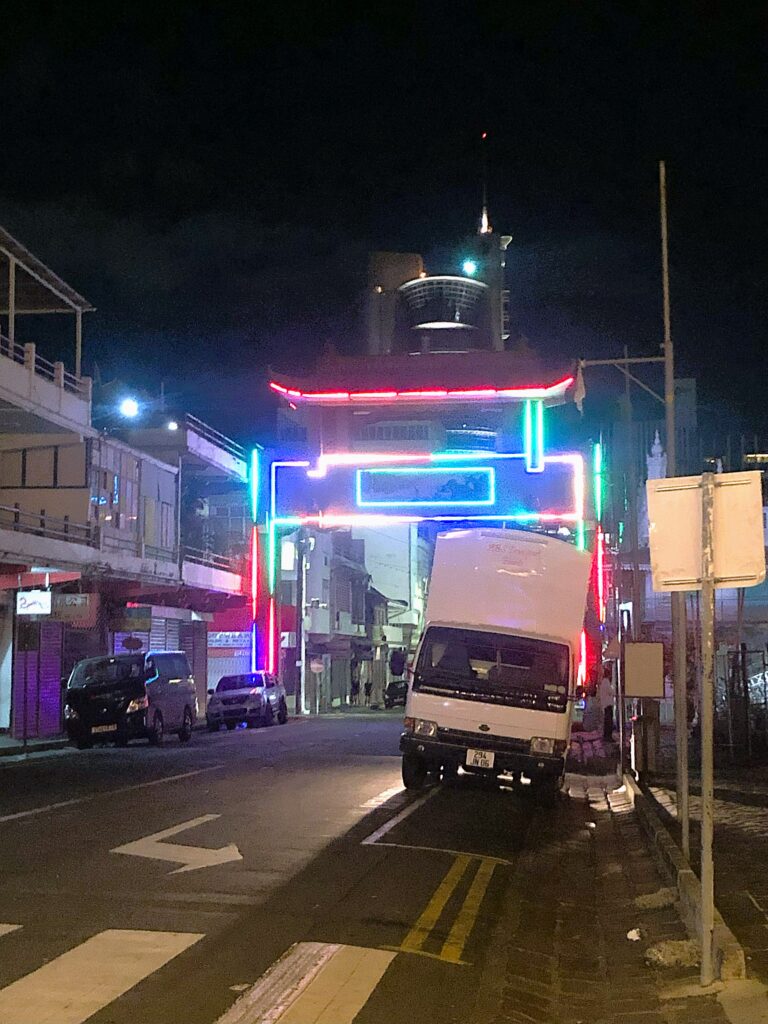
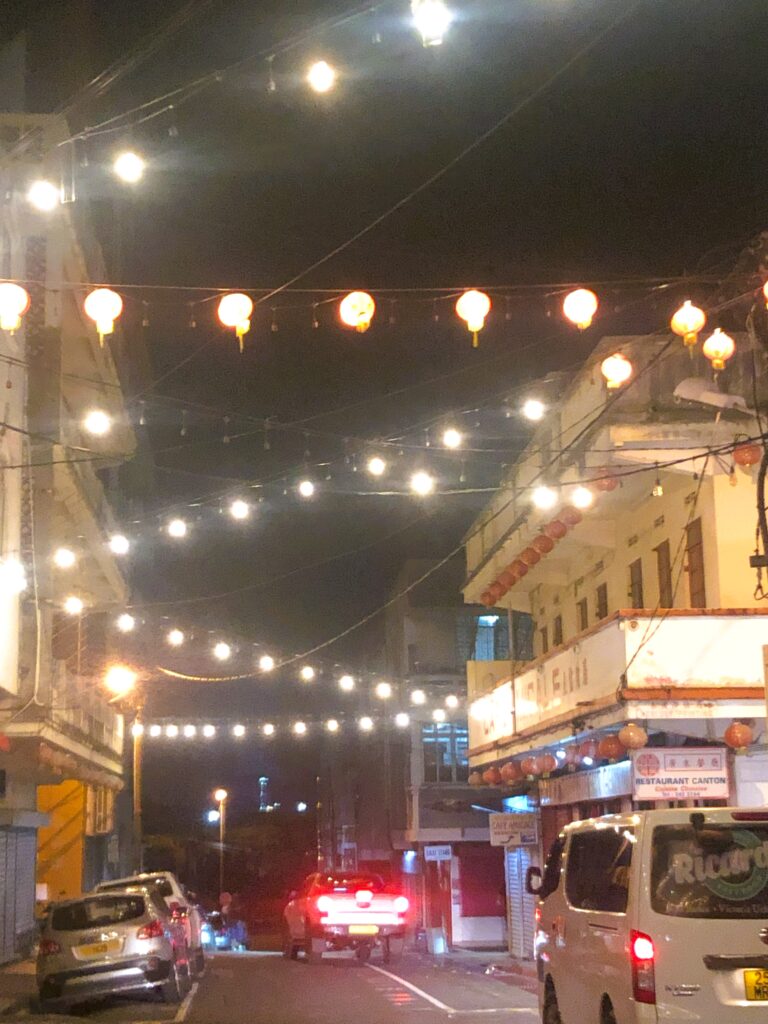
The Central market of Port Louis is also located near Chinatown. This is a local market having an authentic taste of Mauritius with its fruits and vegetables stalls whose vendors shout at the top of their lungs to lure customers. You will also find local street food, local drinks and some gateau cakes or pastries worth trying in this market.
Religious places and Colonial buildings
Since, Port Louis is a reflection of the multi-cultural identity of Mauritius, it is very well evident through the architecture of the place. There a huge Jummah masjid mosque, Sockalingum Meenatchee Ammen Kovil temple, St Louis Cathedral and the Kwan Tee Pagoda. Other than the religious buildings there are some colonial buildings that serve as important official buildings of Mauritius.
Natural History Museum
The Natural History Museum is the oldest museum in all of Mauritius. The place takes you back in time with an array of fascinating exhibits making you familiar with the species of animals found on the island. There are sections for birds, marine creatures, seashells, insects, butterflies, reptiles and many others. It also tells you about the extinct species of the island that once roamed Mauritius’s shores like the Aldabra tortoise and Dodo. Both became extinct due to excessive hunting by the Dutch. There is an entire special section for Dodo with first ever sketches of the creature and, a real skeleton. We had fun exploring this museum. We suggest visiting it to know more about the flora and fauna of Mauritius.

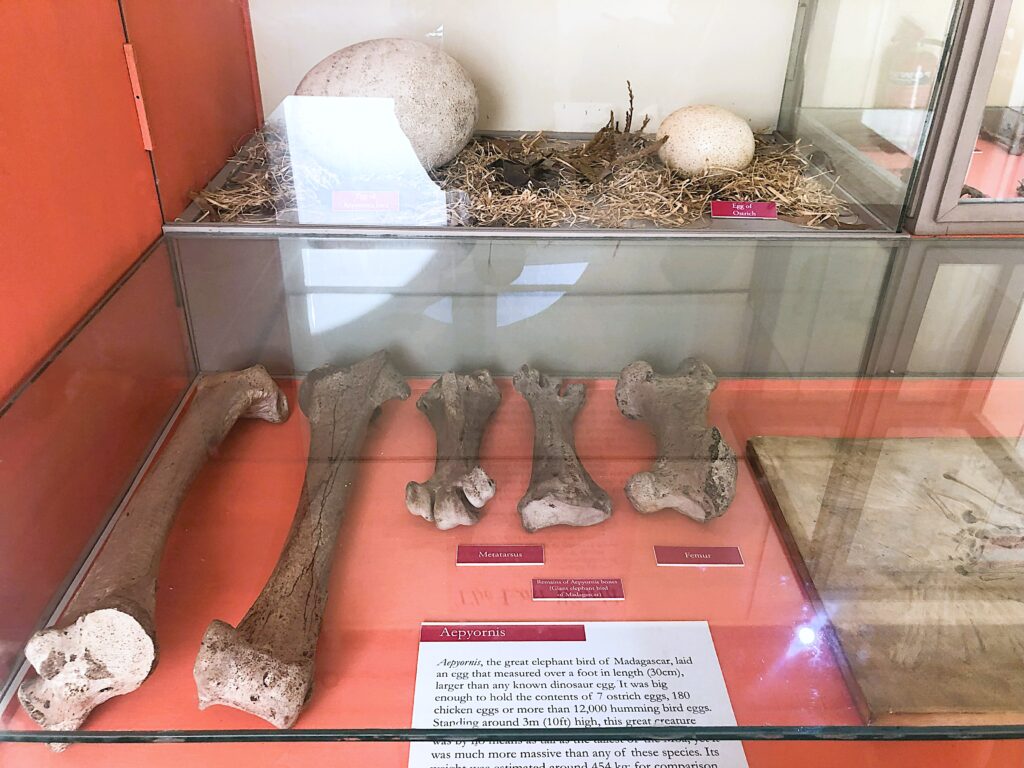
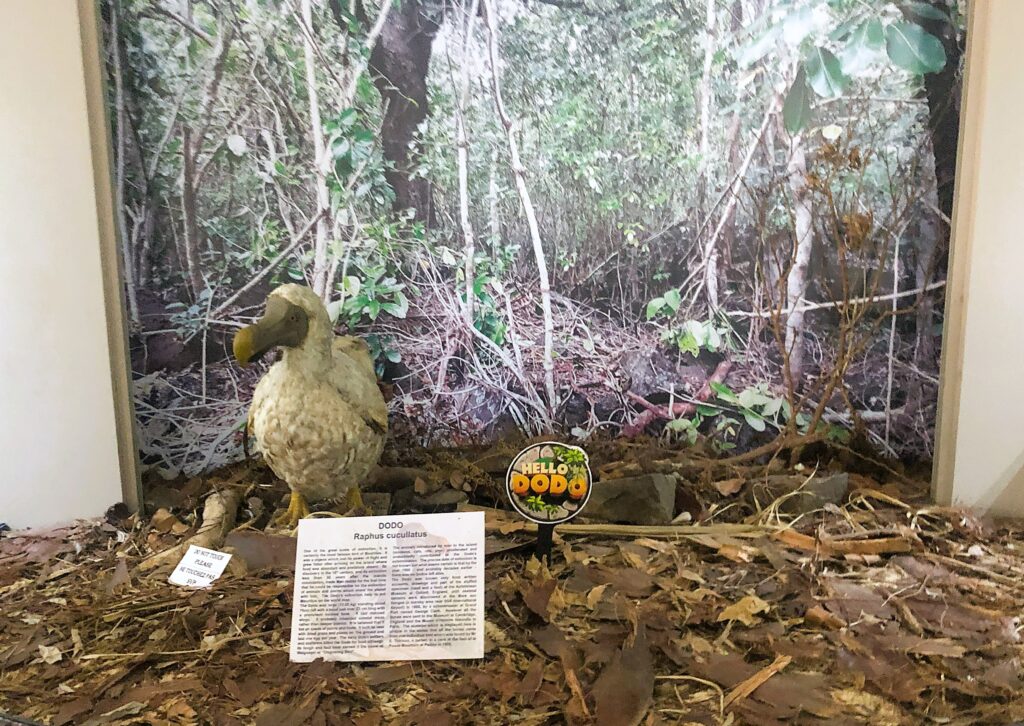

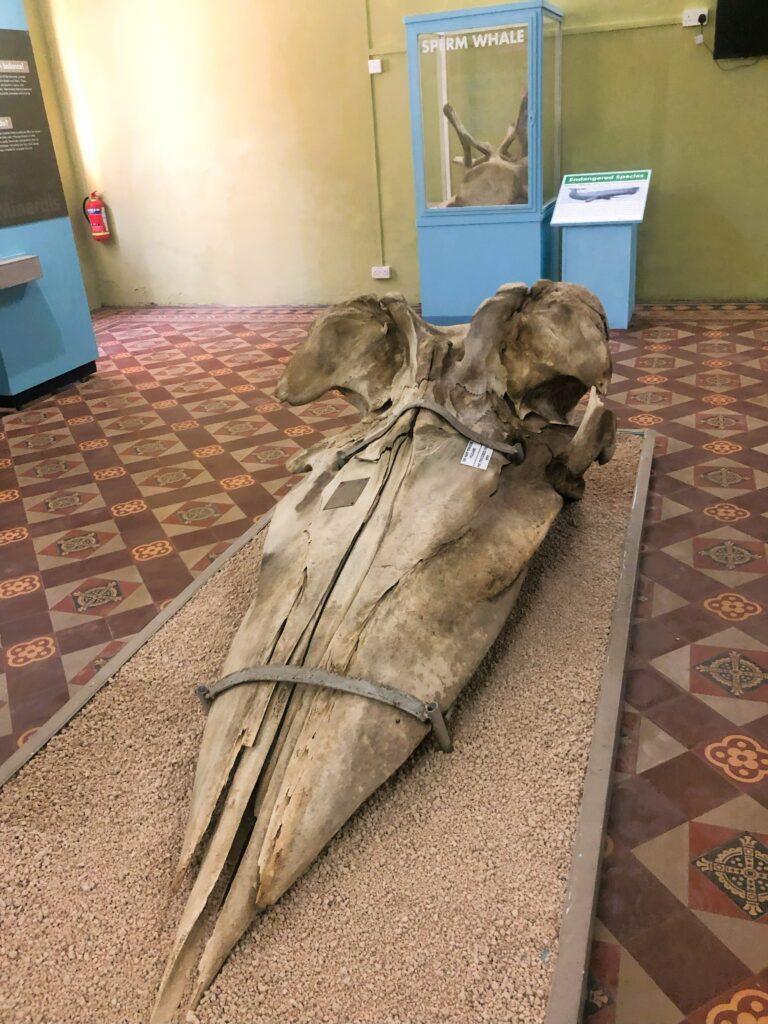
Just opposite to the museum is the Le Jardins des La Compagnie, the garden originally meant for vegetable growing. This garden is beautiful place to spend some leisure time or a break. The park has huge trees, many fountains and quite a number of statues. A statue of the local sculptor Prosper d’Épinay is present here. If you are visiting the museum you may definitely explore this garden.
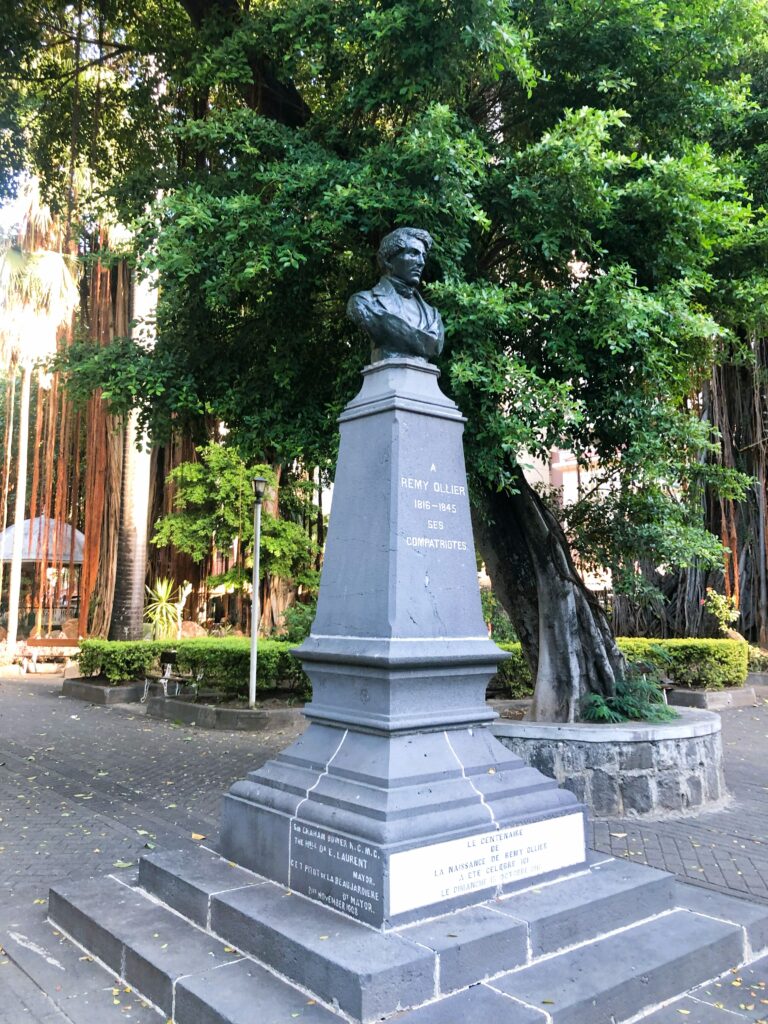
Pamplemousses Garden
Ever searched Mauritius on google? The three most famous images that pop up in a search related to Mauritius includes an image of a pond covered in giant disc shaped lily leaves. That image is from the Sir Seewoosagur Ramgoolam Botanical garden alias Pamplemousses Botanical garden. As the name suggests it is a botanical garden in the Pamplemousses district approximately 10 km from Port Louis in the North of Mauritius. It falls on the main bus route from Port Louis to Grand Gaube/Goodlands or Pamplemousses.
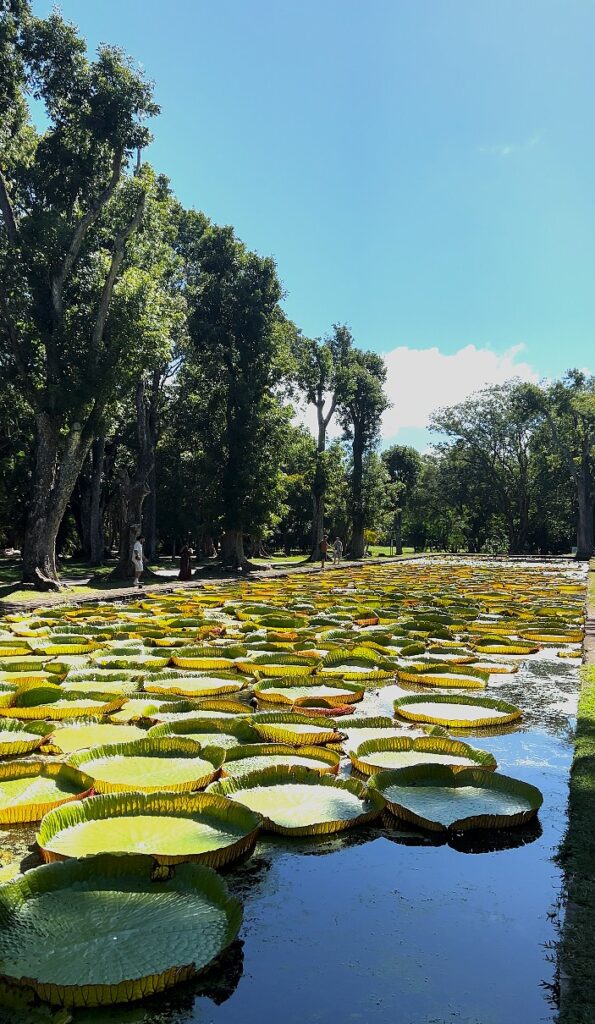
The entry fees to the garden is 700MUR and you get a map to find your way. The map plays an important role in getting you back on track or else you might get lost inside. There are many indigenous tress as well as some foreign tree species in the garden. The huge trunk of some trees especially the Baobab trees signify that they have stood the test of time. There are a white lily pond, a pink lily pond and a giant lily pond. A beautiful chateau adorns the east wing of the garden. There are several medicinal plants with their name and purpose mentioned in placards.
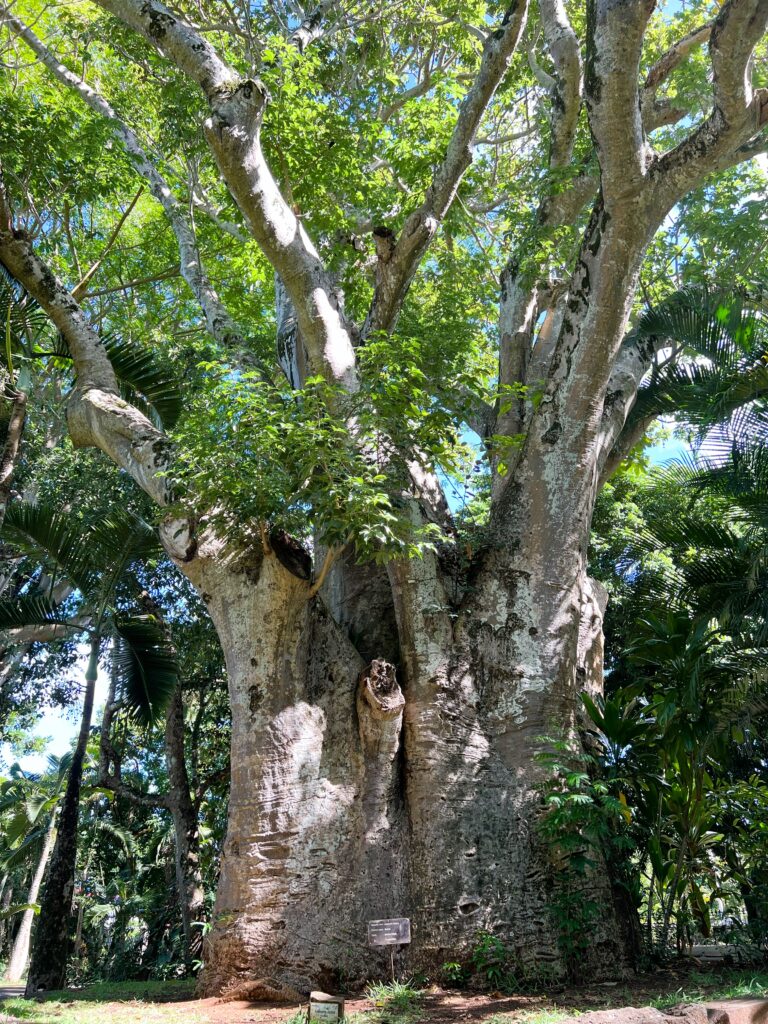
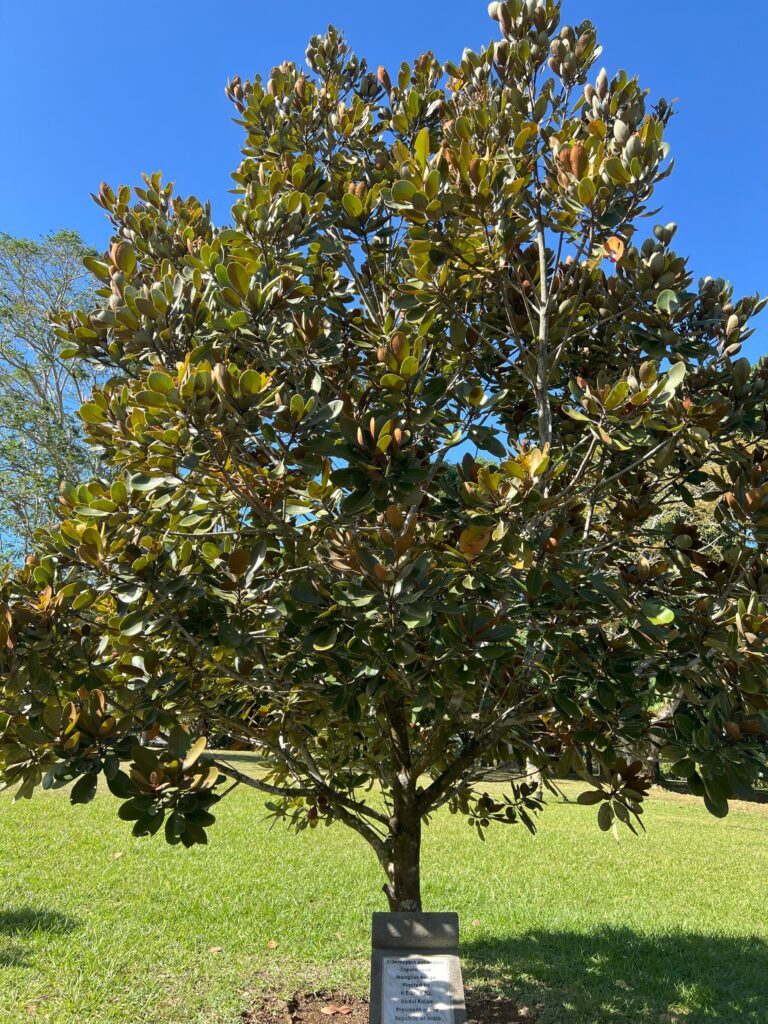
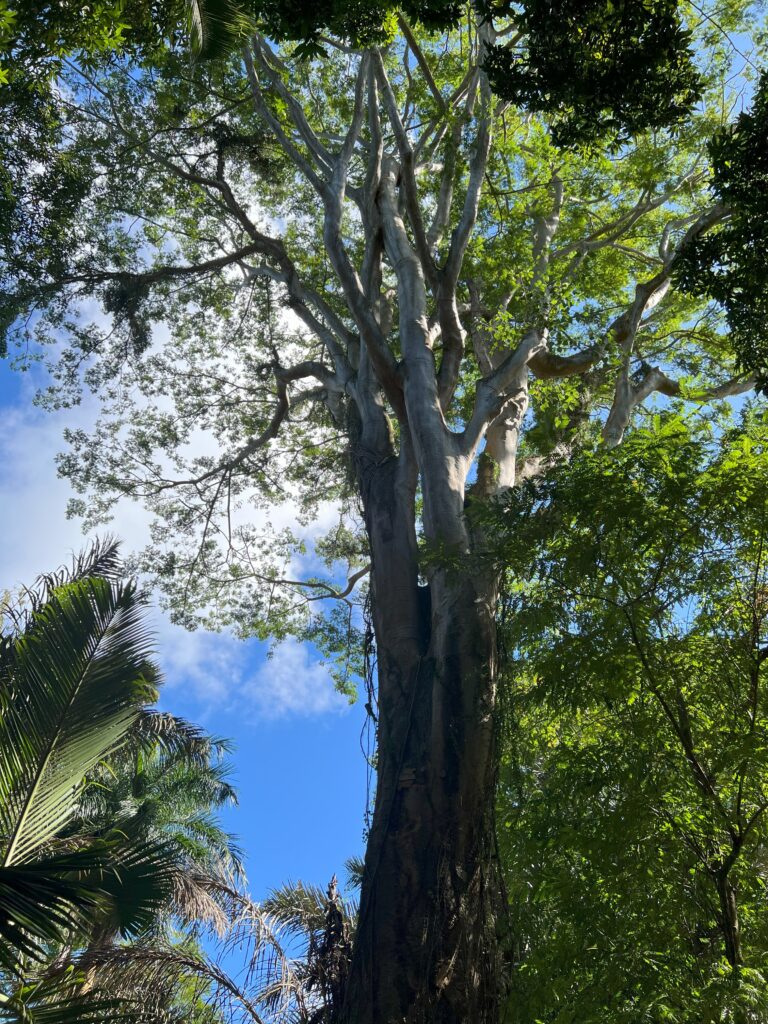
There is a memorial for the father of the nation Sir Seewoosagur Ramagoolam. Even his mortal remains were buried in this garden. The dense tree coverings, well prepared pathways and sound of birds give you a feeling that you are amidst a forest. There are many sections of this garden so a map is must. It is good place to relax and rejuvenate away from the hustle and bustle of a tourist destination. You would need at least 2 hours to go around the entire garden.
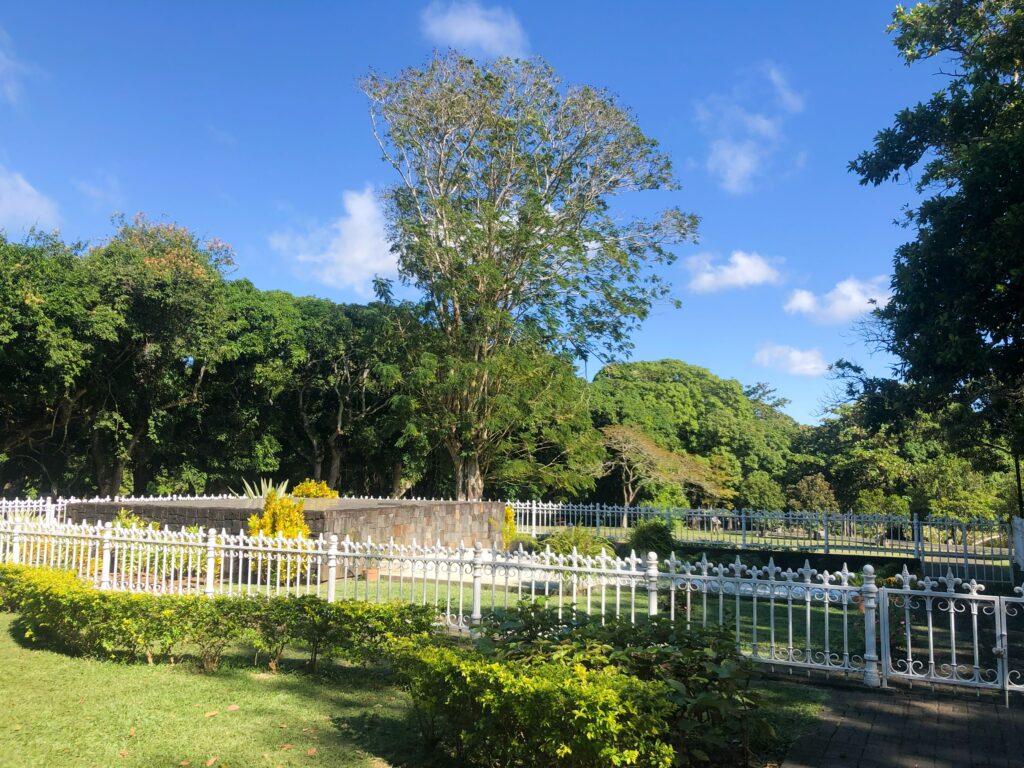
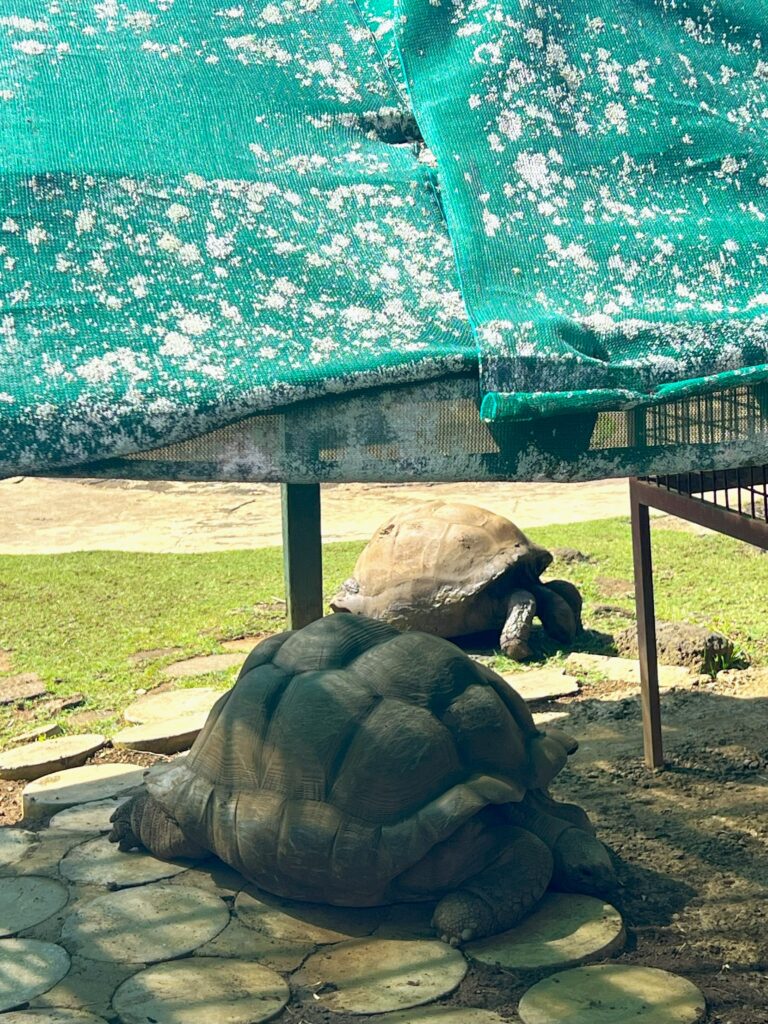
Cap de Malheaureux
This is perhaps one of the most photographed places in Mauritius. Cap de Malheaureux meaning the “unfortunate tip” is the north most tip of Mauritius. It is unfortunate because it has witnessed many shipwrecks on its rugged coastline. So the French gave it this name.
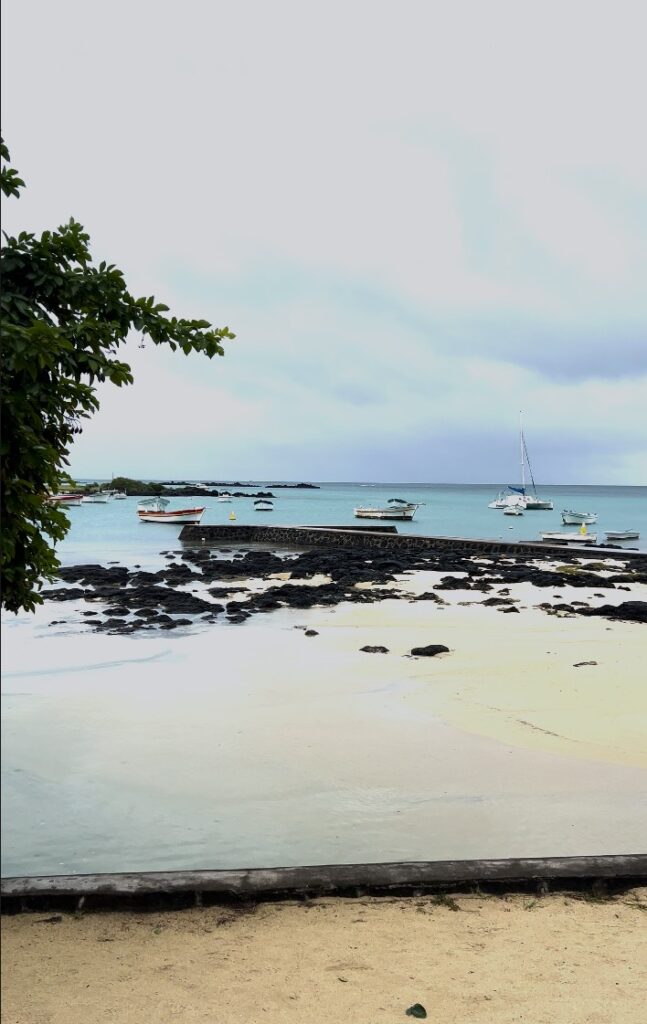
The red and white church you often come across in pictures of Mauritius is the church of Notre Dame Auxiliatrice. It is also at Capde Malheaureux in the North Mauritius. The beautiful setting of the church whose red roof is in contrast with the blue ocean water and the sky, makes for an outstanding background. There are many fishing boats on the shore. This is a small fishing village, hence, the locals sell fresh sea food by the beach. You can buy them, request a shack to cook you a lunch or dinner of the fresh seafood. However, it is astonishingly quiet at this place considering the popularity.
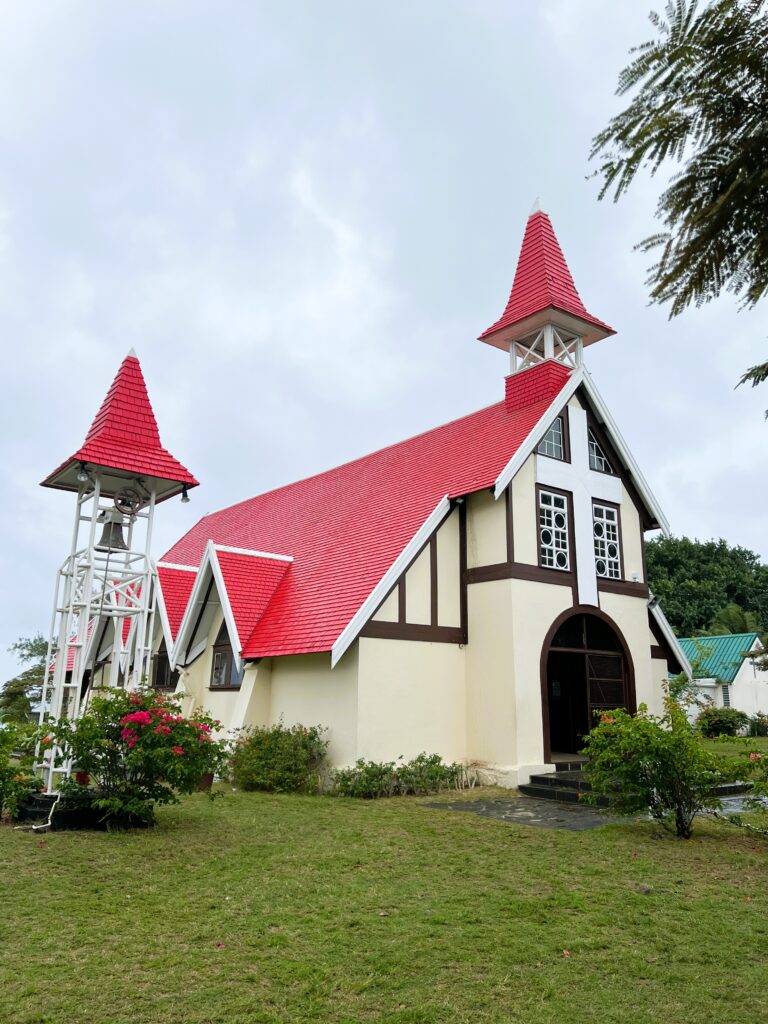
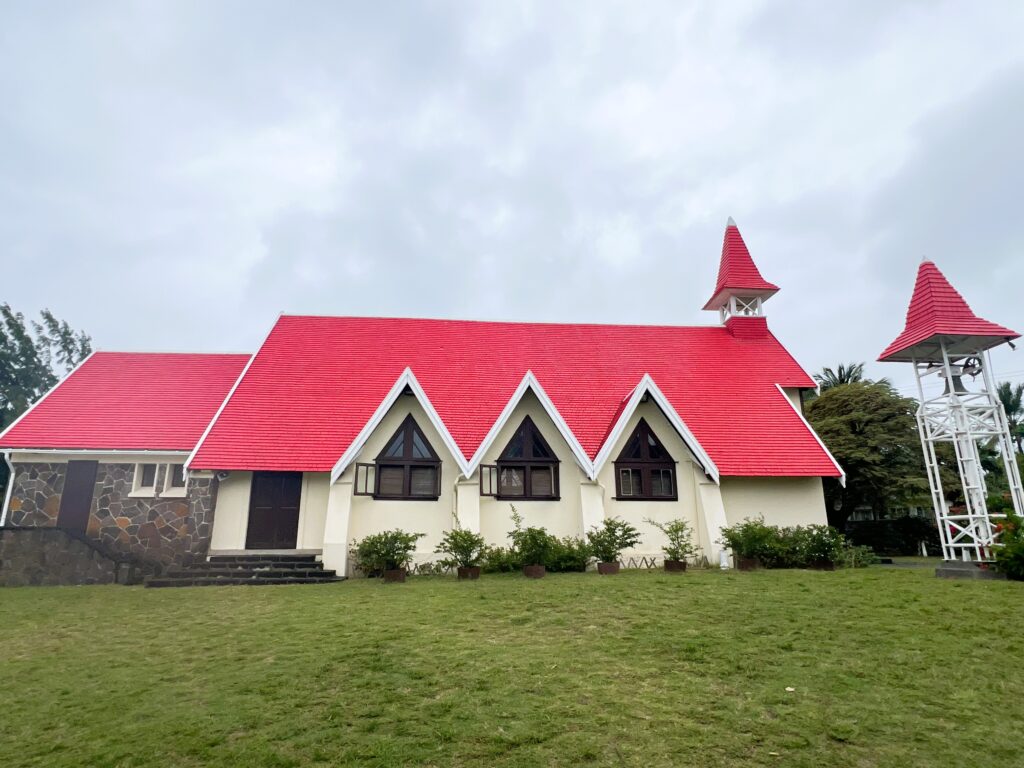
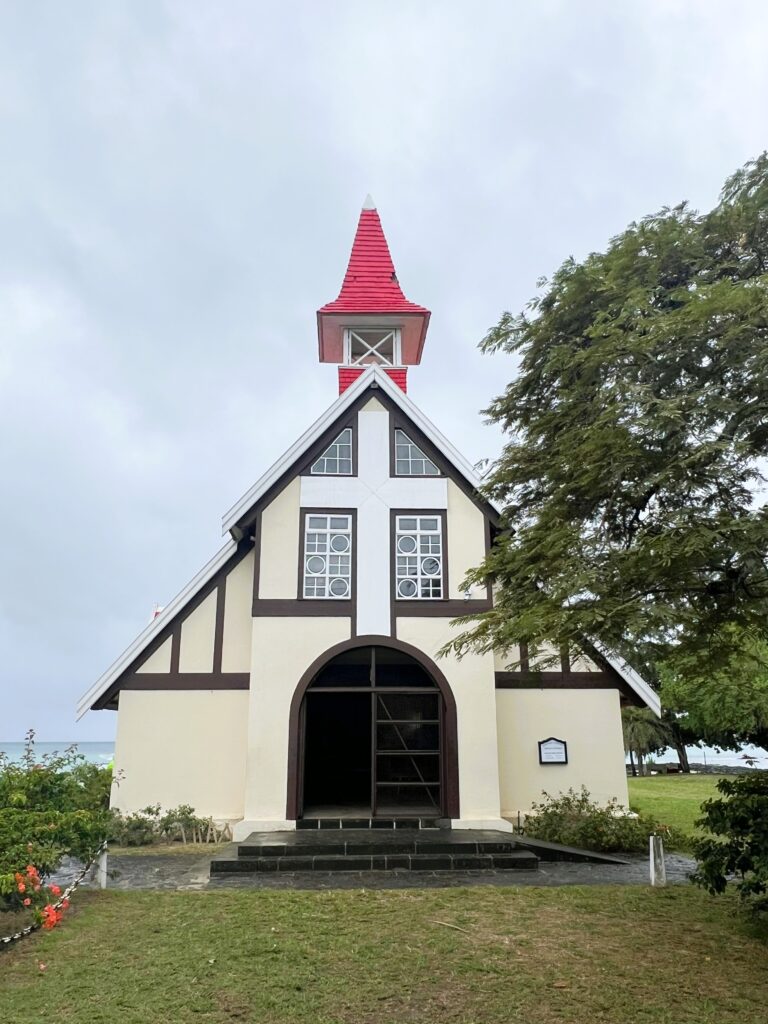
Grand Baie
The village of Grand Baie is perhaps the touristiest place in Mauritius. It is probably the only place that has some sort of a nightlife where majority of the towns/cities close down by 6:30 in the evening. The reason for it being bustling with tourists may be the beautiful horseshoe coastline of the bay. The stretch of coastline 3-4 km on either side of Grand Baie is dotted with stunning peaceful public and private beaches.
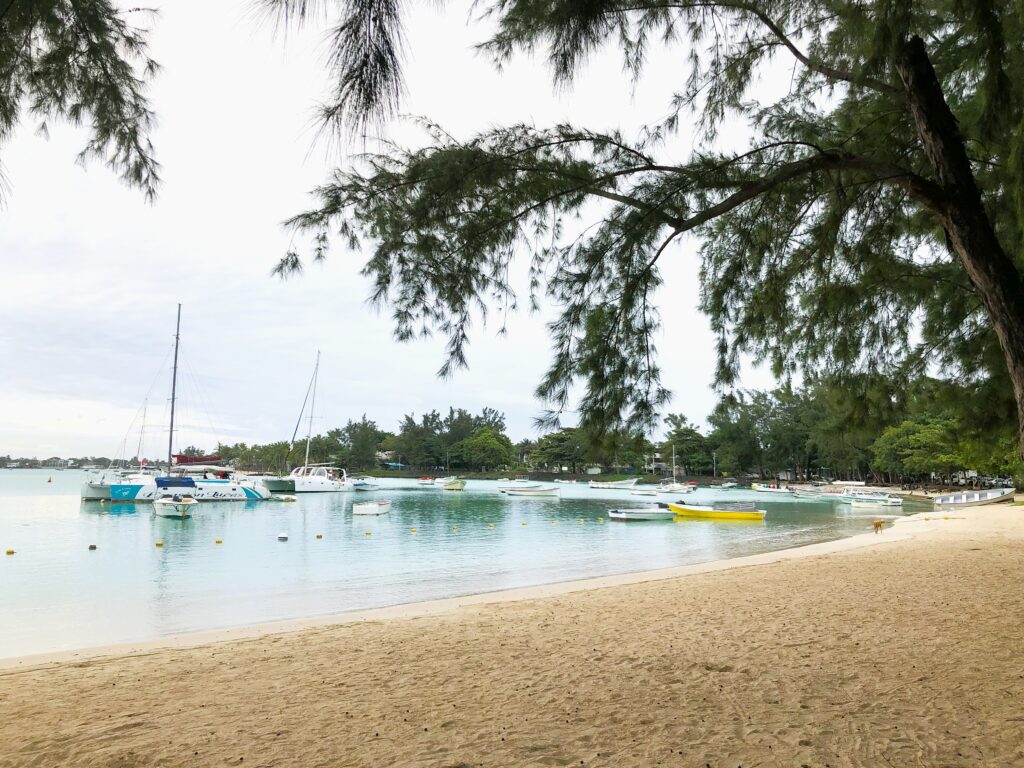
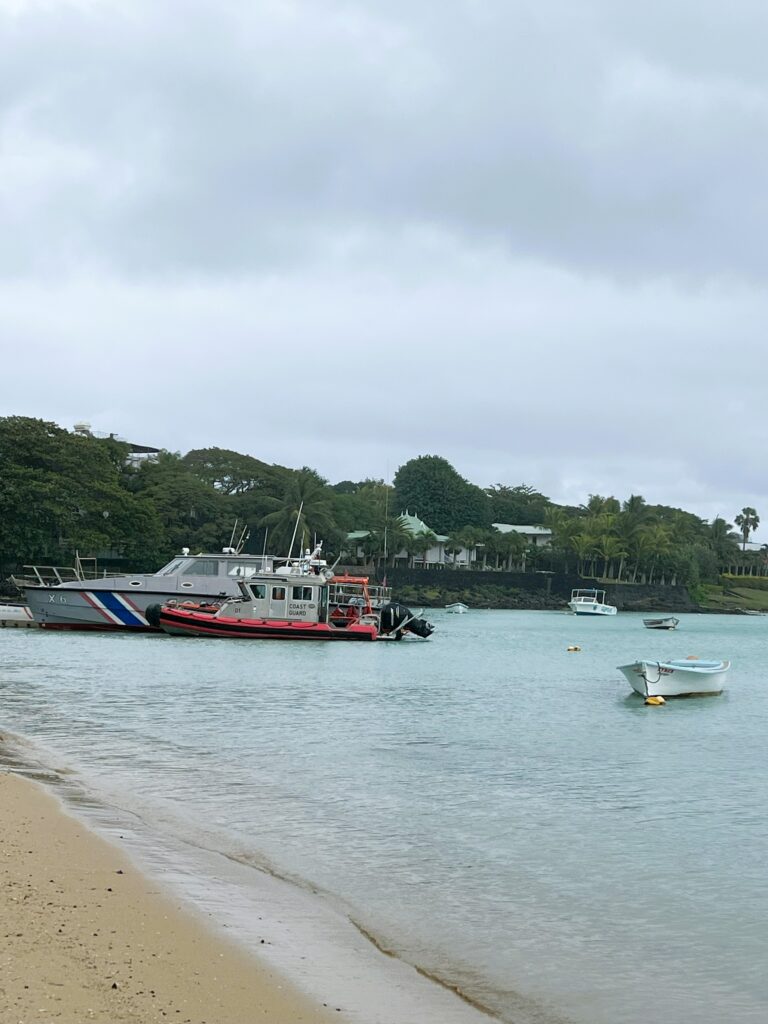
There are also a lot of places like shopping malls/stores, clubs, pools, bars and restaurants that keep you busy. Most of the tourists stay at Grand Baie while touring through the island. It is so different from rest of the places in Mauritius. If you do not wish to go much exploring throughout the island, this is the best place to be. We stayed here for another 2 days for our North Mauritius trip and used bus as our mode of transportation to explore.
Grand Baie shares its coastline with several continuous beaches including Mont Choisy, Point Aux Cannonniers and Troux Aux Biches in the South and Pereybere beach and Bain Beouf beach in the North. We were following the map and though of walking up to the Mont Choisy beach. It was a folly as the coastline is not even. Somewhere it is high and rocky while even sandy at only a few places. We had a difficult walk and finally gave up. Tired, we then took a bus and reached Mont Choisy beach. Other than Grand Baie, we explored Mont Choisy beach and Pereybere beach. While the former was a regular public beach like any other in Mauritius, the latter was a beautiful beach.
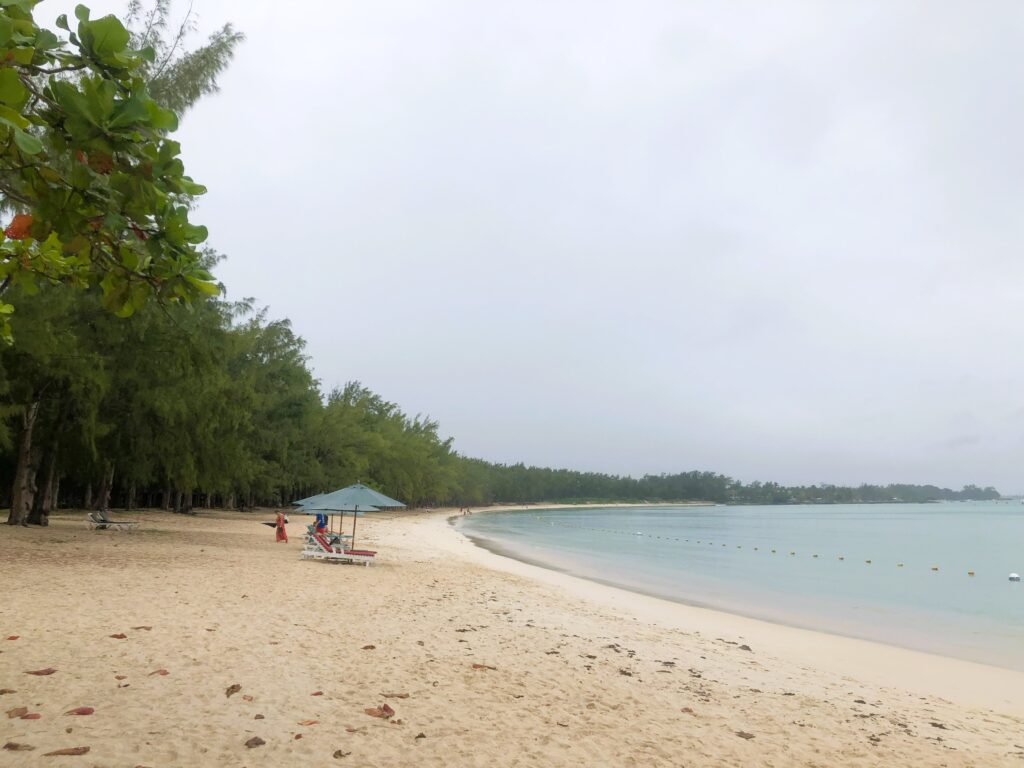
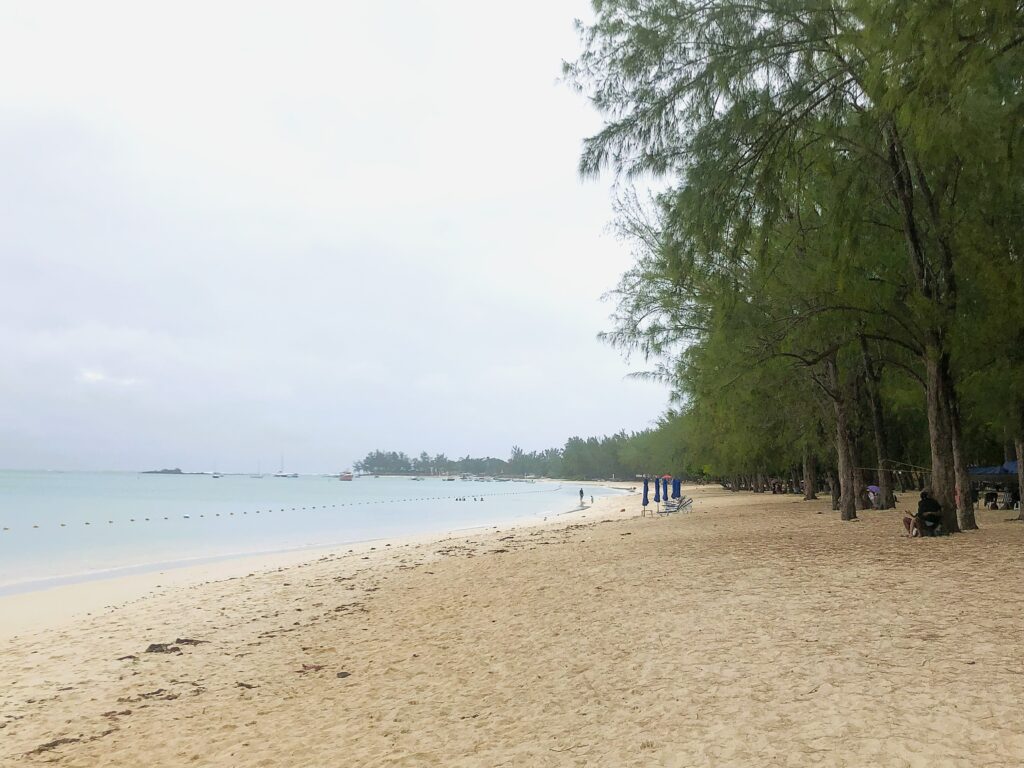
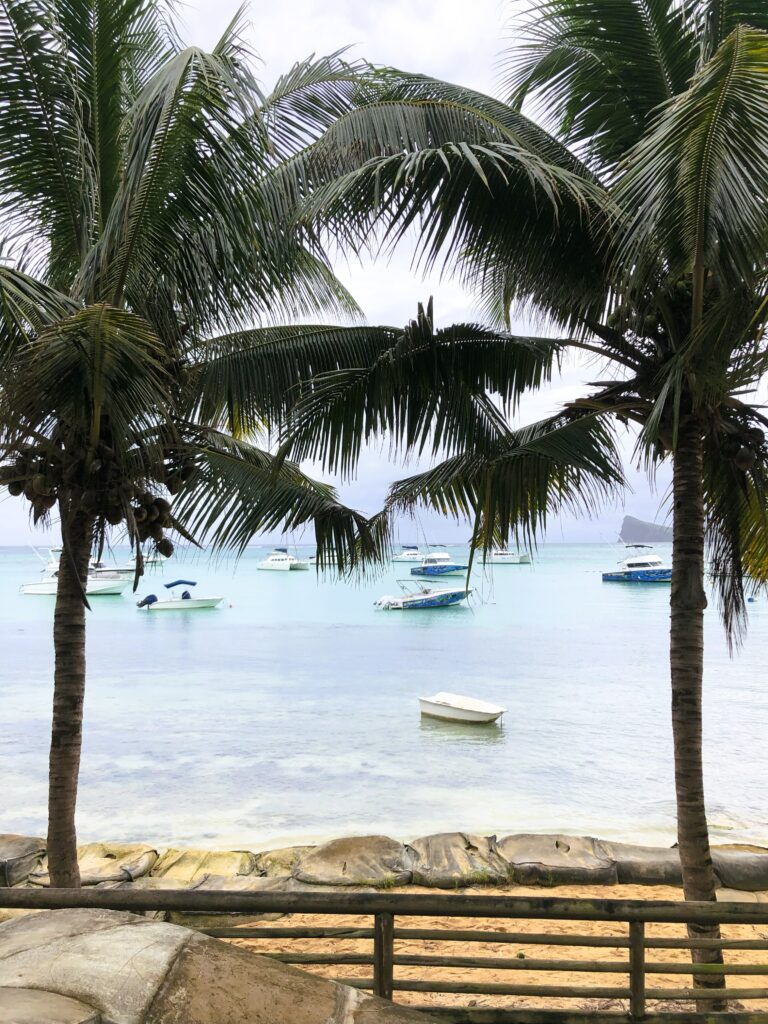
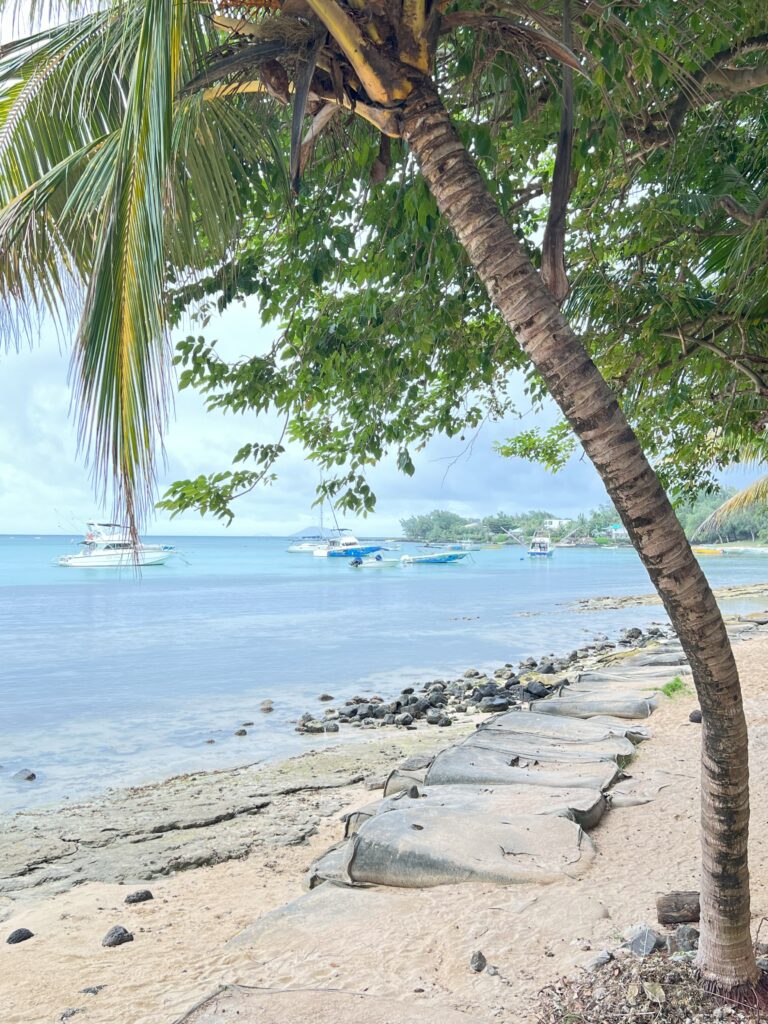
North Islands Tour (3/4 islands)
There are 4 offshore islands in the north of Mauritius- the Flat Island, the Round island, Coin de Mire and Ilot Gabriel. Many tour/boat operators offer catamaran as well as speedboat trips to any 3 or 4 of the above mentioned islands. Staying in the north it is mandatory to take this day trip that includes a visit to flat and round islands with a barbeque lunch at any of these. A ride around Coin de Mire and a chance to see some dolphins or go snorkelling. You should pack your swimwear, sunscreen and a hat. It is a fun way to spend your day. The only concern is the weather. If the sea is rough there would be no trip like was the case with us. But, wish you luck.
